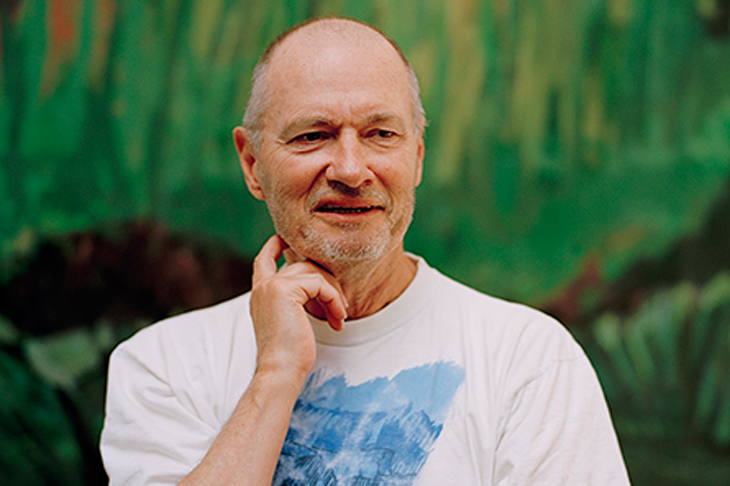Green is the colour of hope, or so they say. Picture the arrival of spring and how a barren view from the window suddenly turns into a luscious colour field of different shades of green: the strident light green of new leaf growth, the dappling yellow greens of sun beams illuminating the fresh arrivals, the deep shades of evergreens that survived the winter. Such was the view from the Copenhagen studio of Per Kirkeby. Green is also notorious as a colour, as difficult to wear in clothing as for painters to handle. It has a habit of asserting a will of its own, somewhat visually indomitable. Few painters of recent times have handled green with as much mastery as Kirkeby. To paint a picture that contains a lot of green is to separate the wheat from the chaff. Kirkeby passed this test with admirable panache.
Untitled (1999), Per Kirkeby. Courtesy Michael Werner Gallery, New York and London
I had the pleasure and the privilege to work with Kirkeby on his major exhibition at Tate Modern in 2009. It would be facile to reduce the artist to any one of the easy nomenclatures: a Nordic painter, a Danish artist, a proponent of the ‘New Spirit in Painting’. Kirkeby originally trained as a geologist. His work remains as rich in layers as the Arctic landscapes he was so fond of exploring. At various points, his practice touched on the irony of Pop art, the immediacy of nature observation, a new wave of Danish cinema, small and large-scale sculpture. Whichever form his work took, there was something of the familiar and something of the utterly surprising: landscape painting mingled with references to Tintin; seemingly minimalist sculpture echoed the overwhelming materiality of the Grundtvig’s Church in Copenhagen; what appeared like colour-saturated depictions of tectonic plates were in fact conversations with Delacroix’s 19th-century Orientalist fantasies.
Brett – Felsen (2000), Per Kirkeby. Courtesy Louisiana Museum, Humlebæk
One of the particular joys of working with Kirkeby was to learn about his wildly varied network of references and interests. Cowboy films and comics featured as much as the greats of cultural and art history. It was through Per that I first learned about Peder Balke, one of the pioneering painters of 19th-century Scandinavia, and read Henry David Thoreau’s Walden, an ode to a somewhat theatrical idea of solitude. Yet, within this variety, there was also a remarkable consistency that stretched across Kirkeby’s work in its many manifestations. His painting, often described as ‘neo-expressionist’ and subsumed under the generalisation of a somewhat cliched view of 1980s painting, is instantaneously recognisable. Vigorous brushwork, a confident sense of colour and a skilfully structured ‘all-over’ freed from the shackles of perspectival conventions are key parts of his vocabulary. Where his paint was allowed to act energetically and to adhere to a logic all of its own, his architectural brick sculptures celebrated restraint and calm.
While it was saddening to receive the news of Kirkeby’s death, there is solace in the determination with which the best of his work asserts the forces of life. Green remains the colour of hope.
Achim Borchardt-Hume is director of exhibitions at Tate Modern, London.
